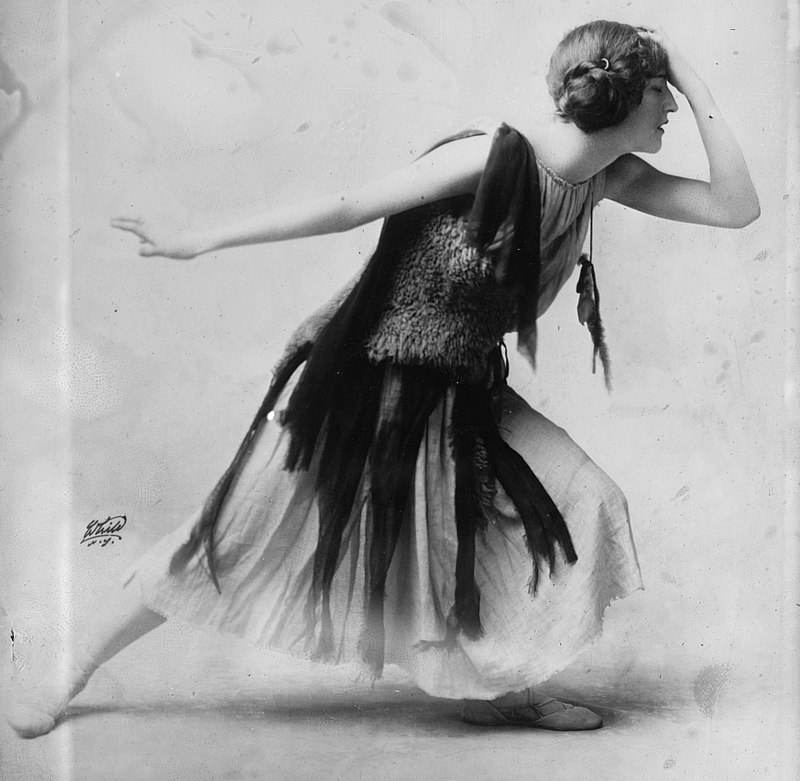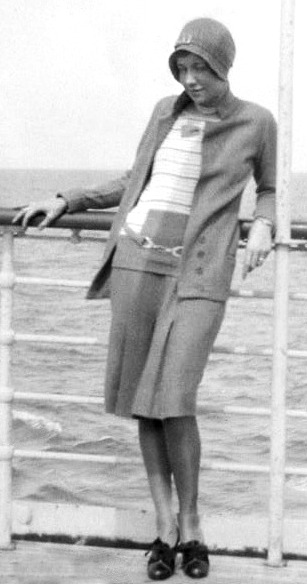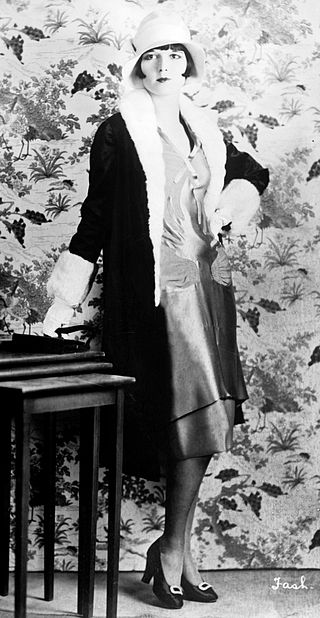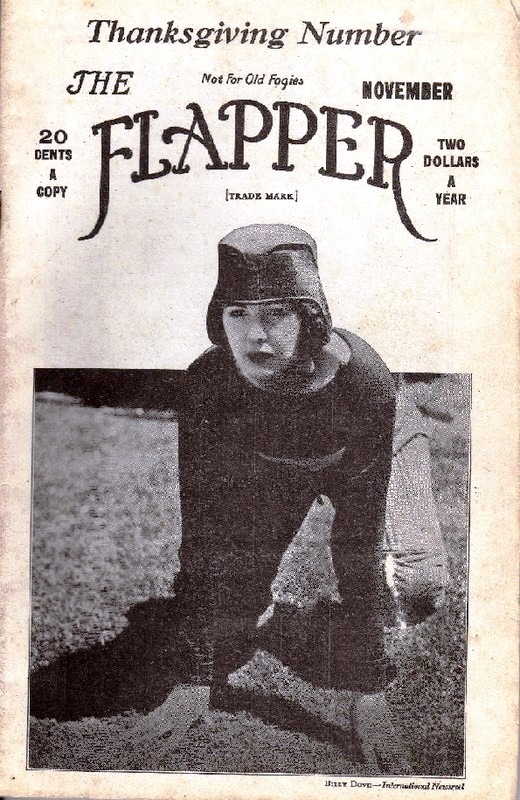The flapper is the most recognizable cultural icon of the Roaring 20s’ glamour. A young lady with a short “bob” hairstyle and a cigarette dangling from her painted lips dances to the sounds of a live jazz band. Flappers reveled in the new freedoms brought about by the end of World War I and the start of a new era of urbanism, prosperity, and consumerism.
The decade began with the passage of the 19th Amendment, granting white women the right to vote. Women also increased their labor-force participation, actively participated in the country’s new mass consumer culture, and enjoyed greater personal freedom.
Despite the heady freedoms embodied by the flapper, true equality and liberation for women remained elusive in the 20s. It would be left to the succeeding generations of women to reap benefits from the social changes wrought by the decade. Discover the fascinating history of flappers below.
The “Flapper”
The term “flapper” first popped up in Great Britain after World War I to describe a young girl who was still slightly awkward in movement and had not yet entered womanhood.
Authors like F. Scott Fitzgerald and artists like John Held Jr. popularized the term in the United States, half creating and half reflecting the style and image of the flapper. Fitzgerald defined the ideal flapper as beautiful, expensive, and around nineteen. Held emphasized the flapper image by trying to draw young girls sporting unbuckled galoshes that made a “flapping” sound when they walked.
Flappers had an image and attitude.
Following the war, the term became synonymous with the new wave of 1920s women who smoked cigarettes, wore skirts that glossed their knees, and drank alcohol while grooving in jazz clubs, surrounded by ogling male suitors.
The Definition of Flappers
According to Joshua M. Zeitz, flapper fashion would not have been complete without the creeping hemline, which reached 14 inches above the ground by 1925 or 1936. Sheer stockings completed the scandalous look, sometimes rolled below the knees.
Flappers began wearing shorter skirts to show off their ankles and legs and dance. They were especially fond of the Charleston, a 20s dance craze that featured waving arms and fast-moving feet and was pioneered by African Americans, initially in the South and afterward in Harlem.
Dancing was difficult in traditional women’s fashion because of long dresses and traditional corsets, which tightly bound a lady’s midsection and emphasized her waist. Around 1923, French designer Coco Chanel popularized the “garçonne look,” which included high hemlines, nonexistent or dropped waistlines, and straight, sleeveless tops. This new design allowed women to dance freely by using more flexible and lighter undergarments that produced a straight, slim silhouette.
Flappers were defined not only by their clothing but also by their attitudes and behaviors. Flappers were young, fast-moving, quick-talking, daring, and unconcerned about previous taboos or social conventions. They smoked cigarettes, drove cars, drank alcohol, and kissed and “petted” various men.
Flapper Clothing
The Flappers’ image was defined by drastic—and, to some, scandalous— changes in women’s clothing and hairstyles. Almost every piece of clothing was trimmed and lightened to facilitate movement.
It is said that when girls went dancing, they “parked” their corsets. The new, energetic Jazz Age dances demanded that women be able to move freely, which the “Ironsides” of whalebone did not allow. Underwear, known as “step-ins,” replaced pantaloons and corsets.
Even today, the flappers’ outer clothing is easily identified. As mentioned before, Coco Chanel popularized this look, known as “garçonne” (“little boy”). Women flatten their chests by tightly wrapping strips of cloth around them to make them look more like boys.
The waists of flapper clothing were lowered to the hips. Beginning in 1923, flappers wore rayon or artificial silk stockings, which they often rolled over a garter belt.
In the 1920s, the hems of skirts began to rise as well. The hem rose a few inches initially, but between 1925 and 1927, a flapper’s skirt fell underneath the knee.
The skirt falls just an inch below the knees, barely overlapping the twisted and rolled stockings. The idea is that when a woman walks in a breeze, you will occasionally notice the knee (which is not rouged—just that’s newspaper talk), but always in an unintentional, Venus-surprised-at-the-bath kind of way.
Flapper Hairstyles and Make-Up
The Gibson Girl, who took pride in her beautiful, long, lush hair, was taken aback when the flapper cut it off. The “bob” was a short haircut that was eventually replaced by a much shorter haircut, the “Eton” or “shingle” cut.
A woman’s shingle hair was slicked down and boasted a curl on each side of her face covering her ears. Flappers’ outfits were frequently completed with a cloche, a felt, bell-shaped hat.
Flappers also began to wear make-up, which had previously been reserved for loose women. Rouge, eyeliner, powder, and lipstick quickly became popular.
The Flappers’ End
The flapper era ended abruptly on October 29, 1929, with the crash of the stock market and the start of the Great Depression. Nobody could afford the lifestyle anymore, and the new period of frugality made the Roaring Twenties’ freewheeling hedonism appear wildly out of touch with bleak new economic realities.
Many film-star flappers had already died two years before due to the introduction of talking film, which wasn’t always kind to them. The Hays Code, enacted in 1930, severely restricted sexual themes in films, making independent women in the flapper mold nearly impossible to portray onscreen.
The Flappers’ Spirit Lives On
Some changes that occurred in the 20s persisted. Even though the Great Depression destroyed much of America’s prosperity and consumer confidence, the country’s mass consumer culture would ultimately re-emerge, stronger than ever.
In the coming decades, more women will pursue higher education and enter politics as lobbyists, activists, or lawmakers. The Roaring 20s’ transformation of sexual norms and family life persisted. Changes in the family, such as the trend toward birth control, smaller families, and fewer restraints in private life, were permanent.
The flapper embodied the 1920s free spirit, and an older generation despised him as boisterous, wild, and disgraceful. While the older folk were clucking their tongues, the younger generation was busy reinventing itself and inventing the flapper lifestyle we now know. Here are some modern trends for wearing the Roaring 20s glamour you might want to try today!




